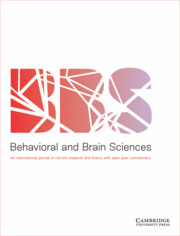Article contents
Dopamine: Go/No-Go motivation versus switching
Published online by Cambridge University Press: 01 June 1999
Abstract
Sensitivity to incentive motivation has a formative influence on extraversion. Mesoamygdaloid dopamine (DA) activity may, at one level, act as a micro-gate permitting an incentive to influence behavioral organization – “Go/No-Go” in this scheme. Data on function elsewhere in the mesocorticolimbic DA system are taken to support this particular function. At another level of analysis, the data in Depue & Collins's review, along with those on the rest of the ventral tegmental area (VTA) system, may fit better with a “switching” function in information processing. This link is supported by correlations between measures of extraversion, learned inattention, and overall DA activity. The point is extended to the novelty-seeking feature of the extraverted personality.
- Type
- Open Peer Commentary
- Information
- Copyright
- © 1999 Cambridge University Press
- 4
- Cited by


